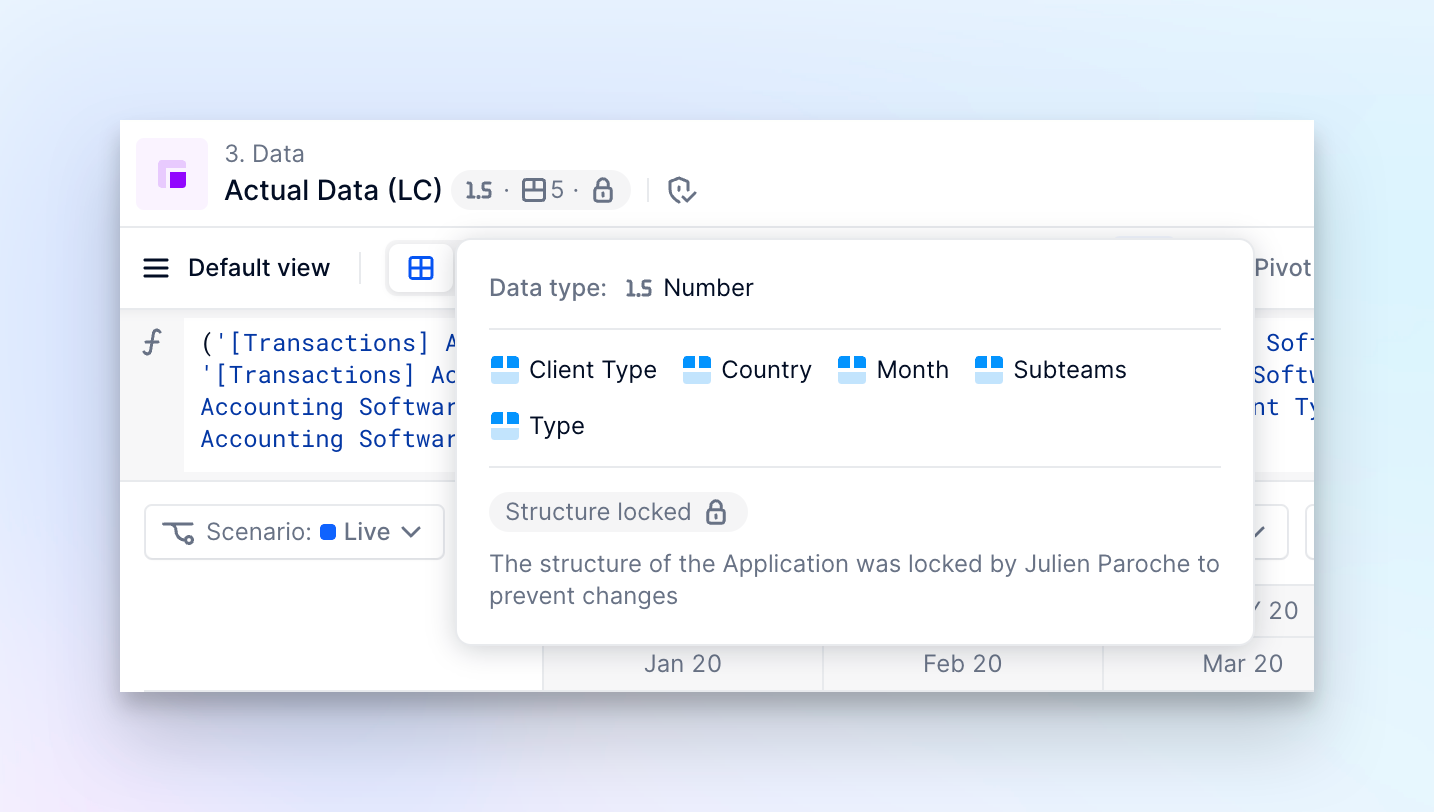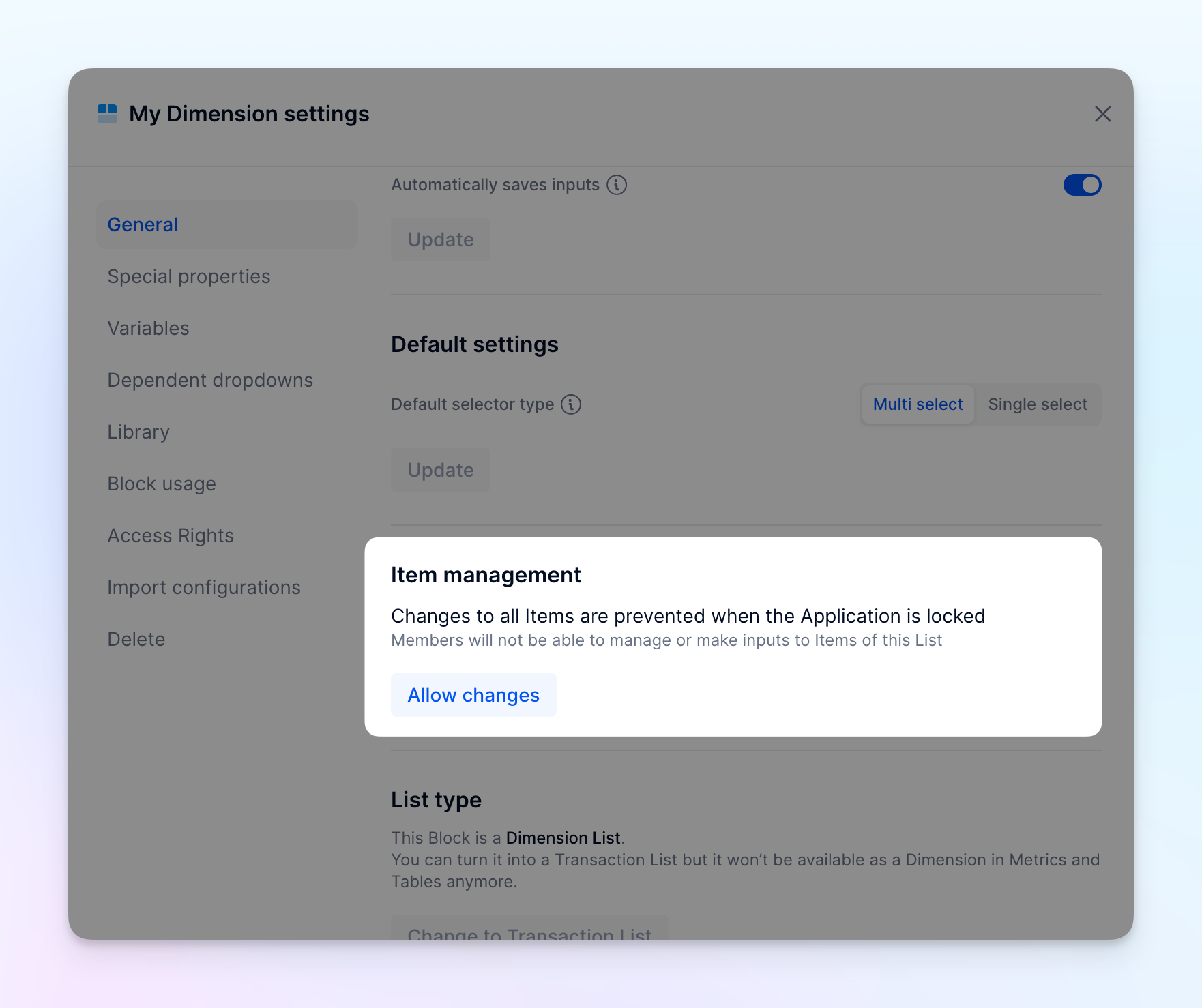You can use App Lock in Pigment to temporarily lock your Application and to prevent any structural changes.
Table of Contents
What is App lock?
When you use App Lock, it puts your Application into a “safe state”, and it prevents everyone, including admins, from performing specific operations. However, members can continue to import and input data, and to edit Views and Boards. This means that the application is only partially restricted.
By locking an Application, you lock the structure for all members, regardless of their role and permissions. This includes admins with the highest level of permissions, preventing them from making accidental changes to an unlocked application. While admins can’t change the structure of a locked application, they do have permission to unlock the application.
Changing the App Lock status to Locked or Unlocked doesn’t impact the model or the data. You’re only changing the status of the Application, so there’s no associated risk with App Lock.
Updated App Lock statuses are reflected to all connected members in real time, so you can lock and unlock the Application at any time, and as frequently as you need.
How does App Lock work?
When you lock your Application with App Lock, members can’t perform these operations:
- Update Application and configuration settings
- Create or delete a Block
- Update Block settings or folders
- Update Metric Dimensions
- Create, update or delete List Properties
- Update formulas
- Delete Scenarios
- Edit (add, update, delete, import) Items in protected Dimension Lists
However, when the Application is locked, Members can continue to:
- Create, update, and delete Views & Boards
- Create and rename Scenarios
- Perform manual inputs (except on protected Dimensions)
For example, add, update, remove values in grids. - Trigger CSV and connector imports (except on protected Dimensions)
- Create, update and delete import connections and configurations
- View Block settings
- Edit (add, update, delete, import) items in non-protected Dimension Lists
If an Application is locked, you’ll see a small lock icon ( ) in the Block header with the message: Structure locked
) in the Block header with the message: Structure locked

How to protect a Dimension list?
By default, all Dimension lists are protected. When locking an Application, Items in protected Dimensions can’t be edited and any operation on them (inputs, cell update, imports, and so on.) won’t be allowed.
If you want to unprotect some Dimensions to still be able to edit them when the Application is locked, you can allow changes in the Block settings:
From a locking point of view, this makes the Dimension behave like a Transaction List.

Why would I use App Lock?
Here are a few situations when it’s useful to lock an Application:
- You need more control over changes performed in an Application.
- You want to temporarily secure an Application from accidental changes.
- You don’t want changes applied to a live Application.
By locking an Application, Members are required to perform tests in a sandbox, or in a duplicate Application. You can unlock the Application when the changes are reviewed and approved. - You need to ensure that all active Applications are stable.
Who can use App Lock?
To lock an Application with App Lock, you need the Configure Application permission. This permission is enabled by default for all application admins.
How can I use App Lock to lock an Application?
You can lock an Application structure from either the Application menu in the Workspace homepage or from the Application’s general settings page.
To lock the Application structure from your Workspace, do the following:
- In your Workspace homepage, locate the Application you want to lock.
- Click the menu (...) to open your Application menu.
- Do one of the following:
- Click Lock structure
- Click Unlock structure
To lock the Application structure from your Application’s general settings, do the following:
- Open your Application and click Settings.
- In the Application management section, locate the Lock the structure of the Application setting.
- Do one of the following:
- Click Lock
- Click Unlock
Considerations when using App Lock
You need to consider the following limitations when working with the current implementation of App Lock. We’re working to improve these limitations as we develop a larger initiative to provide an end-to-end change management feature.
- You can only access Block settings from the Block header.
- The error section from the sidebar is only visible when the Application is unlocked.
